History
 The Constitution has been in the news a lot these days, or shall I say, the violation of the Constitution. Sometimes I wonder if the signers of the Constitution would even be able to recognize the nation that they had envisioned when they wrote the Constitution. I happen to think they would not, but then even at the signing of the Constitution there was controversy. In that way, I suppose there would always be those who would do everything in their power to change or even do away with the Constitution. At the time of the Constitutional Convention in Philadelphia, only 38 of the 41 delegates present at its conclusion, agreed to sign the document. There were those, even then, who disagreed with what was laid out there. I suppose that is common in anything in life. Needless to say, it was a hard-won battle to win the ratification by the necessary nine out of thirteen US states in existence at the time.
The Constitution has been in the news a lot these days, or shall I say, the violation of the Constitution. Sometimes I wonder if the signers of the Constitution would even be able to recognize the nation that they had envisioned when they wrote the Constitution. I happen to think they would not, but then even at the signing of the Constitution there was controversy. In that way, I suppose there would always be those who would do everything in their power to change or even do away with the Constitution. At the time of the Constitutional Convention in Philadelphia, only 38 of the 41 delegates present at its conclusion, agreed to sign the document. There were those, even then, who disagreed with what was laid out there. I suppose that is common in anything in life. Needless to say, it was a hard-won battle to win the ratification by the necessary nine out of thirteen US states in existence at the time.
Before the Constitution, the United States was operating under the Articles of Confederation, which was ratified several months before the British surrender at Yorktown in 1781. The Articles of Confederation and Perpetual Union were an agreement among all thirteen original states in the United States of America. Basically it was the first constitution. Even when not yet ratified, the Articles provided a system for the Continental Congress to direct the American Revolutionary War, conduct diplomacy with Europe, and deal with territorial issues and Native American relations, but it was weak in that it didn’t allow for our president, a court system, or taxation, thereby leaving us with a weaker government. Congress was also given no authority to enforce its requests to the states for troops, giving us a weaker military force. Yet, even with the proposed changes, there were those who would disagreed with the proposed new Constitution.
When the Constitutional Convention was convened on May 25, 1787, the plan had been to amend the Articles 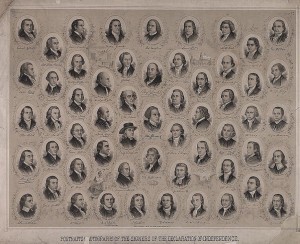 of Confederation, but that plan was quickly set aside in favor of writing a completely new Constitution. The meeting was held in Philadelphia’s Pennsylvania State House. It is now known as Independence Hall. Revolutionary War hero George Washington, a delegate from Virginia was elected as convention president. The debate was heated, but in the end, the delegates came up with a brilliant federal organization that boasted an intricate system of checks and balances. One of the main divisions in the discussions was that the more populated states wanted a state representation in Congress, and the smaller states wanted equal representation. That problem was solved by the Connecticut Compromise, which proposed a two chamber legislature with proportional representation in the lower house known as the House of Representatives and equal representation of the states in the upper house known as the Senate. It seemed a fair way to do it, but there are still those who disagree to this day.
of Confederation, but that plan was quickly set aside in favor of writing a completely new Constitution. The meeting was held in Philadelphia’s Pennsylvania State House. It is now known as Independence Hall. Revolutionary War hero George Washington, a delegate from Virginia was elected as convention president. The debate was heated, but in the end, the delegates came up with a brilliant federal organization that boasted an intricate system of checks and balances. One of the main divisions in the discussions was that the more populated states wanted a state representation in Congress, and the smaller states wanted equal representation. That problem was solved by the Connecticut Compromise, which proposed a two chamber legislature with proportional representation in the lower house known as the House of Representatives and equal representation of the states in the upper house known as the Senate. It seemed a fair way to do it, but there are still those who disagree to this day.
It would seem like they had an instant solution, but that wasn’t so. As dictated by Article VII, the document would not become binding until it was ratified by nine of the 13 states. On December 7, Delaware, Pennsylvania, New Jersey, Georgia, and Connecticut ratified the Constitution in quick succession. Other states, especially Massachusetts, opposed the Constitution, because it failed to reserve undelegated powers to the states and lacked constitutional protection of basic political rights, such as freedom of speech, religion, and the press, which I personally agree with. By February 1788, they had reached a compromise under which Massachusetts and other states would agree to ratify the document and that amendments would immediately be added to provide the protections they proposed. The Constitution was then narrowly ratified in Massachusetts. Maryland and South Carolina quickly followed. On June 21, 1788, New Hampshire became the ninth state to ratify the document, and it was agreed that government under the US Constitution would begin on March 4, 1789. In June, Virginia ratified the Constitution, followed by New York in July. The Constitution was signed on this day, September 17, 1787.
As promised, on September 25, 1789, the first Congress of the United States adopted 12 amendments to the 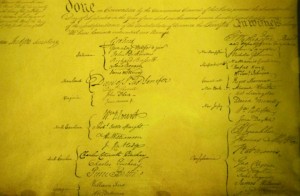 US Constitution, called the Bill of Rights. The Bill of Rights was then sent to the states for ratification. Ten of these amendments were ratified in 1791. In November 1789, North Carolina became the 12th state to ratify the US Constitution. Rhode Island, which opposed federal control of currency and was critical of compromise on the issue of slavery, resisted ratifying the Constitution until the US government threatened to sever commercial relations with the state. On May 29, 1790, Rhode Island voted by two votes to ratify the document, and the last of the original 13 colonies joined the United States. Today, the US Constitution is the oldest written constitution in operation in the world. That should say something, and it should be reason to protect it.
US Constitution, called the Bill of Rights. The Bill of Rights was then sent to the states for ratification. Ten of these amendments were ratified in 1791. In November 1789, North Carolina became the 12th state to ratify the US Constitution. Rhode Island, which opposed federal control of currency and was critical of compromise on the issue of slavery, resisted ratifying the Constitution until the US government threatened to sever commercial relations with the state. On May 29, 1790, Rhode Island voted by two votes to ratify the document, and the last of the original 13 colonies joined the United States. Today, the US Constitution is the oldest written constitution in operation in the world. That should say something, and it should be reason to protect it.
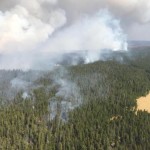
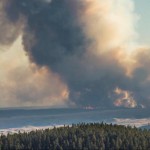 There is a fire burning in Yellowstone National Park. There are fires burning all over the western United States, as a matter of fact, but this particular fire bring back memories of the last big fire in Yellowstone National Park, and just how upset everyone was over the Let It Burn policy. Now, here we are again with a lightning caused fire burning in Yellowstone National Park, and no effort being made to fight it…unless structures end up being in danger of destruction.
There is a fire burning in Yellowstone National Park. There are fires burning all over the western United States, as a matter of fact, but this particular fire bring back memories of the last big fire in Yellowstone National Park, and just how upset everyone was over the Let It Burn policy. Now, here we are again with a lightning caused fire burning in Yellowstone National Park, and no effort being made to fight it…unless structures end up being in danger of destruction.
As with the 1988 fire, they tell us that the Natural Burn policy, another name for the Let It Burn policy, is in effect for this fire. The biggest problem with that policy is, of course, is that a fire burning unchecked can get so far out of control that it burns beyond human ability to put it out. It becomes an impossible task. That is what happened in 1988, and the whole nation was angry about it. In the end, that fire burned 1.2 million acres. Many people had the impression that the Park Service had failed badly. Nearly a third of Yellowstone National Park was badly burned. The Park Service said that the situation was inevitable because of the drought. Still, most people, me included, felt that if they had tried to fight it sooner, they could have saved a lot of the park from the hideous scarring damage it ended up with.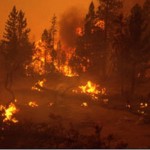

I understand that Yellowstone National Park has several fires each year, and that they usually burn themselves out in a short period of time, but in drought years, the Park Service simply can’t allow the fires to go. My concern with the current fire is that we are already at 2594 plus acres burned. How quickly is this fire going to get out of hand and how long before they will decide to do something about it?
The Yellowstone National Park fire of 1988 started in June and burned into November. It is a summer I will never forget. Our skies were constantly filled with smoke. The air stunk from the acrid smoke. It was hard for people to breathe. You couldn’t get away from it. I know this is how every person who lives in a fire area feels. I know I don’t have to explain this to anyone who has been around fires much. They already know more about wildfires than they ever wanted to.
The important thing for the government and the park service to remember is that the people of this nation love 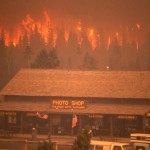
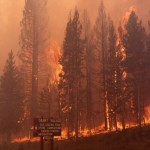 Yellowstone National Park, our oldest national park. It existed before the states where it is located were even states. I truly understand that fires are a natural part of the forest ecosystem, and that they get rid of dry brush that could bring about a worse fire, but I can’t see that it serves any good purpose to let 1.2 million acres of beautiful forest land burn and not even try to stop it. It destroys the homes of wildlife. It hurts the economy of the area it is in. All I ask is that the Park Service and the government remember just how important Yellowstone National Park is to the people of this nation.
Yellowstone National Park, our oldest national park. It existed before the states where it is located were even states. I truly understand that fires are a natural part of the forest ecosystem, and that they get rid of dry brush that could bring about a worse fire, but I can’t see that it serves any good purpose to let 1.2 million acres of beautiful forest land burn and not even try to stop it. It destroys the homes of wildlife. It hurts the economy of the area it is in. All I ask is that the Park Service and the government remember just how important Yellowstone National Park is to the people of this nation.
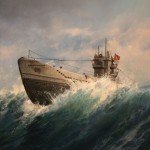 Submarines have been around a long time, but during the world wars, Germany built a submarine that was superior to any other submarine of the time. Called the U-Boat, the name was short for Unterseeboot, or under sea boat. Winston Churchill said, “the only thing that ever really frightened me during the war was the U-boat peril.” Churchill identified the threat that the U-Boats posed. The Atlantic Lifeline was vital to Britain’s survival. If Germany had been able to prevent merchant ships from carrying food, raw materials, troops and their equipment from North America to Britain, the outcome of World War II could have been very different. Britain might have been starved into submission, and her armies would not have been equipped with American built tanks and vehicles. The U-Boats were a serious threat. The Battle of the Atlantic was a must win situation. If Germany won that battle, Britain would likely have lost the war.
Submarines have been around a long time, but during the world wars, Germany built a submarine that was superior to any other submarine of the time. Called the U-Boat, the name was short for Unterseeboot, or under sea boat. Winston Churchill said, “the only thing that ever really frightened me during the war was the U-boat peril.” Churchill identified the threat that the U-Boats posed. The Atlantic Lifeline was vital to Britain’s survival. If Germany had been able to prevent merchant ships from carrying food, raw materials, troops and their equipment from North America to Britain, the outcome of World War II could have been very different. Britain might have been starved into submission, and her armies would not have been equipped with American built tanks and vehicles. The U-Boats were a serious threat. The Battle of the Atlantic was a must win situation. If Germany won that battle, Britain would likely have lost the war.
From 1918 on, Germany was not supposed to have submarines or submarine crews. However, no checks were in place to stop any research into submarines in Germany and it became clear that during the 1930’s, Germany had been investing time and men into submarine research. Their research and subsequent development of the U-Boat made it a submarine that was very difficult to locate and that made it extremely dangerous. They developed the Enigma machine, which was a series of electro-mechanical rotor cipher machines developed and  used in the early to early-mid twentieth century for commercial and military usage. Enigma was invented by the German engineer Arthur Scherbius at the end of World War I. The codes it could provide were difficult to decipher. German military messages enciphered on the Enigma machine were first broken by the Polish Cipher Bureau, in December 1932. This success was a result of efforts by three Polish cryptologists, Marian Rejewski, Jerzy Rózycki and Henryk Zygalski, working for Polish military intelligence. Rejewski reverse-engineered the device, using theoretical mathematics and material supplied by French military intelligence. Then, the three mathematicians designed mechanical devices for breaking Enigma ciphers, including the cryptologic bomb. In 1938, the Germans made the machine more complex, and increased complexity was repeatedly added to the Enigma machines, making decryption more difficult and requiring further equipment and personnel. It was more than the Poles could readily produce.
used in the early to early-mid twentieth century for commercial and military usage. Enigma was invented by the German engineer Arthur Scherbius at the end of World War I. The codes it could provide were difficult to decipher. German military messages enciphered on the Enigma machine were first broken by the Polish Cipher Bureau, in December 1932. This success was a result of efforts by three Polish cryptologists, Marian Rejewski, Jerzy Rózycki and Henryk Zygalski, working for Polish military intelligence. Rejewski reverse-engineered the device, using theoretical mathematics and material supplied by French military intelligence. Then, the three mathematicians designed mechanical devices for breaking Enigma ciphers, including the cryptologic bomb. In 1938, the Germans made the machine more complex, and increased complexity was repeatedly added to the Enigma machines, making decryption more difficult and requiring further equipment and personnel. It was more than the Poles could readily produce.
Finally there was a breakthrough. The astonishing achievements of the codebreakers of Bletchley Park saved countless lives. At their peak, there were 12,000 codebreakers at Bletchley Park, 8,000 of them women. The codebreakers helped bring victory in North Africa by giving British commander General Montgomery details of 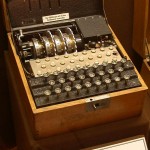 Erwin Rommel’s battle plans and providing the routes of the Nazi supply convoys. This allowed the Royal Navy the opportunity to sink them. Prior to the codebreakers, the U-Boats were only sunk after damage or near damage was done to other ships. Such was the case with the first sinking of a U-Boat. German submarine U-39 was a Type IXA U-boat of the Kriegsmarine that operated from 1938 to the first few days of World War II. On 14 September 1939, just 27 days after she began her first patrol, U-39 attempted to sink the British aircraft carrier HMS Ark Royal by firing two torpedoes at her. The torpedoes malfunctioned and exploded just short of the carrier. In retaliation, U-39 was immediately hunted down by three British destroyers. She was disabled with depth charges, and subsequently sunk. All crew members survived and were captured.
Erwin Rommel’s battle plans and providing the routes of the Nazi supply convoys. This allowed the Royal Navy the opportunity to sink them. Prior to the codebreakers, the U-Boats were only sunk after damage or near damage was done to other ships. Such was the case with the first sinking of a U-Boat. German submarine U-39 was a Type IXA U-boat of the Kriegsmarine that operated from 1938 to the first few days of World War II. On 14 September 1939, just 27 days after she began her first patrol, U-39 attempted to sink the British aircraft carrier HMS Ark Royal by firing two torpedoes at her. The torpedoes malfunctioned and exploded just short of the carrier. In retaliation, U-39 was immediately hunted down by three British destroyers. She was disabled with depth charges, and subsequently sunk. All crew members survived and were captured.
 As the fourteenth anniversary of the September 11th attacks approached, movies that had been filmed following those horrible events began to show up on television again. I think I’ve already watched each and every one of them, but I always feel compelled to watch them again. It isn’t out of a morbid sense of curiosity, but rather as a reminder that there are people out there who are so evil that it is beyond our ability to comprehend. It is also a way to remind myself that there are heroes out there who set aside self, no matter what the danger, in an effort to save others.
As the fourteenth anniversary of the September 11th attacks approached, movies that had been filmed following those horrible events began to show up on television again. I think I’ve already watched each and every one of them, but I always feel compelled to watch them again. It isn’t out of a morbid sense of curiosity, but rather as a reminder that there are people out there who are so evil that it is beyond our ability to comprehend. It is also a way to remind myself that there are heroes out there who set aside self, no matter what the danger, in an effort to save others.
I like to hope that I would be one of those people who come together to save others, but I don’t think that the average citizen really knows what they would do, until they are placed in that position. Our flight instincts seem to be based on just how big a danger we perceive ourselves to be facing. I don’t think that I could leave someone in trouble, but I don’t know how I would feel about actually running into a building like the World Trade Center on September 11.
As I was watching the movie, I was reminded that there were a number of people who were simply never found  at the World Trade Center site. Never found!! In fact, there were over 1000 people who were never found. It was like they were simply vaporized. Of course, there might be pieces of them in the many, some small enough to fit in a test tube, pieces of human remains that have not been identified. It is shocking and sad to me to think that there are actually people who have never been given closure concerning their loved ones. All they know is that their loved ones were killed on September 11, 2001. They don’t know if they suffered, or if it was instant. There is simply no way to know. And that is horrifically hard. I don’t mean to sound morbid, but I have a really hard time when I think about the fact that in just a few hours, more than 1,000 people simply disappeared. In our world of DNA matches and so many other methods of identifying people, and so many pieces of bodies that have been found, I just don’t understand how those people could simply be nowhere, but they are. I think that true closure often comes from being able to view the body, and have a funeral using the real body of the loved one. In the absence of that body, the mind plays tricks on us. We hope that maybe they somehow survived and simply have amnesia or something. Even though we know that is probably wrong.
at the World Trade Center site. Never found!! In fact, there were over 1000 people who were never found. It was like they were simply vaporized. Of course, there might be pieces of them in the many, some small enough to fit in a test tube, pieces of human remains that have not been identified. It is shocking and sad to me to think that there are actually people who have never been given closure concerning their loved ones. All they know is that their loved ones were killed on September 11, 2001. They don’t know if they suffered, or if it was instant. There is simply no way to know. And that is horrifically hard. I don’t mean to sound morbid, but I have a really hard time when I think about the fact that in just a few hours, more than 1,000 people simply disappeared. In our world of DNA matches and so many other methods of identifying people, and so many pieces of bodies that have been found, I just don’t understand how those people could simply be nowhere, but they are. I think that true closure often comes from being able to view the body, and have a funeral using the real body of the loved one. In the absence of that body, the mind plays tricks on us. We hope that maybe they somehow survived and simply have amnesia or something. Even though we know that is probably wrong.
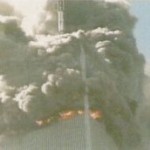
As this fourteenth anniversary of that horrible day arrives, I pray for those who lost loved ones, and those who will never know what happened to their loved ones. I pray that they are able to have emotional closure, even if they can’t have full closure. For the rest of us, I hope that we will never forget what happened that day, the people who died, and the people who did this. Terror and terrorists continue to exist in our world, and they don’t care if their victims were tolerant of their beliefs or not. They have one agenda, and one agenda only, to kill all infidels, because in their minds, that is their obligation and their right. We must stay alert, lest we find ourselves open to another attack.
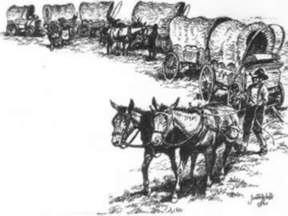 This summer when Bob and I were in the Black Hills, we were looking around in the gift shop at Mount Rushmore, when I came across a book called “Women’s Diaries Of The Westward Journey.” Since then, I have been thinking about what it must have been like to travel in a covered wagon…especially for a woman. Of course, times were different back then, and people did not have the luxury of a daily shower, or even a real bathroom…and that was in their own homes. So, imagine what life would be like on a wagon, traveling in a wagon train headed west in the mid-1800s. As the emigrants were traveling west, they were making their own roads, hunting their own food, and cooking over a campfire. For a lot of people, I’m sure this sounds like going camping, but then imagine doing it for months at a time. A day’s travel averaged about twelve to twenty miles, meaning that on the plains, they often stopped for the day within sight of the site they had just left that morning. For travelers now, that would seem insanely slow, but for the wagon trains, it was just the normal day’s journey. They knew no other way.
This summer when Bob and I were in the Black Hills, we were looking around in the gift shop at Mount Rushmore, when I came across a book called “Women’s Diaries Of The Westward Journey.” Since then, I have been thinking about what it must have been like to travel in a covered wagon…especially for a woman. Of course, times were different back then, and people did not have the luxury of a daily shower, or even a real bathroom…and that was in their own homes. So, imagine what life would be like on a wagon, traveling in a wagon train headed west in the mid-1800s. As the emigrants were traveling west, they were making their own roads, hunting their own food, and cooking over a campfire. For a lot of people, I’m sure this sounds like going camping, but then imagine doing it for months at a time. A day’s travel averaged about twelve to twenty miles, meaning that on the plains, they often stopped for the day within sight of the site they had just left that morning. For travelers now, that would seem insanely slow, but for the wagon trains, it was just the normal day’s journey. They knew no other way.
People back then would have been somewhat crazy to set out alone for the west…or to set out any later than spring, because either scenario was bound to fail. They needed the protection of the wagon train, as well as the 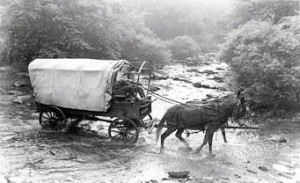 additional supplies, should a wagon be lost to fire, a river crossing, or an attack by Indians. It was their back up plan. They couldn’t just stop at the next town at a store and buy more supplies. There were no towns, stores, or even roads. When we travel, even in the rural state of Wyoming that I live in, we are used to seeing miles with very little to catch the eye, other that an occasional farm house, and an occasional town, but remember that we have roads to follow so we don’t lose our way. And even then, many of us use GPS to make sure we are taking the right road. They had none of that. They had to use the sun and landmarks to make sure they were going the right direction. They depended on people who had taken this trip before them. It was all they had. I think most of us today would go nuts if we never saw a house, a road, or a town. We would wonder if we were insane for setting out on this crazy adventure at all. One woman wrote to her husband, who was waiting at the end of the line, with the spelling ability she had at the time, “I can tell you nothing only that were hear and its strange I wish we had never started … it seems impossible to get their.” She had set out in a wagon train with her four children, without her husband, and that in itself must have been scary.
additional supplies, should a wagon be lost to fire, a river crossing, or an attack by Indians. It was their back up plan. They couldn’t just stop at the next town at a store and buy more supplies. There were no towns, stores, or even roads. When we travel, even in the rural state of Wyoming that I live in, we are used to seeing miles with very little to catch the eye, other that an occasional farm house, and an occasional town, but remember that we have roads to follow so we don’t lose our way. And even then, many of us use GPS to make sure we are taking the right road. They had none of that. They had to use the sun and landmarks to make sure they were going the right direction. They depended on people who had taken this trip before them. It was all they had. I think most of us today would go nuts if we never saw a house, a road, or a town. We would wonder if we were insane for setting out on this crazy adventure at all. One woman wrote to her husband, who was waiting at the end of the line, with the spelling ability she had at the time, “I can tell you nothing only that were hear and its strange I wish we had never started … it seems impossible to get their.” She had set out in a wagon train with her four children, without her husband, and that in itself must have been scary.
Days on the wagon train began long before dawn with a simple breakfast of coffee, bacon, and dry bread. After breakfast, the people secured their supplies, hitched up their teams, and hit the trail by seven o’clock in the morning. Most people walked because of lack of space, and the fact that the wagon was so uncomfortable. The 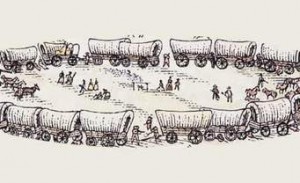 train stopped at noon for a cold meal of coffee, beans, and bacon, which had been prepared that morning. During this break, called nooning, men and women would gather and talk, children would play, and animals would rest. After that, the travel would continue until around six o’clock in the evening, when they wagons would circle for the night. Some people would visit after supper, but most went to bed, because they were exhausted. Some slept in the wagon, but most slept on the ground, because oddly enough it was more comfortable. While traveling west on the wagon trains was a necessary journey to be made to grow this country, it was not an easy journey to make, and for that reason, I have to stand in awe of those who did it.
train stopped at noon for a cold meal of coffee, beans, and bacon, which had been prepared that morning. During this break, called nooning, men and women would gather and talk, children would play, and animals would rest. After that, the travel would continue until around six o’clock in the evening, when they wagons would circle for the night. Some people would visit after supper, but most went to bed, because they were exhausted. Some slept in the wagon, but most slept on the ground, because oddly enough it was more comfortable. While traveling west on the wagon trains was a necessary journey to be made to grow this country, it was not an easy journey to make, and for that reason, I have to stand in awe of those who did it.

 So often, when we have a holiday, people tend to think that it is just another day to have a family dinner and a day off of work. Often, they are celebrating the day for the wrong reason, but not so today. Labor Day is a day for our nation to pay tribute to its workers. No nation can be strong if it has no workers. So, as a show of gratitude, Labor Day was set aside to allow a day of rest for the American worker. When our nation was founded, there was largely nothing here. The native Americans lived in Teepees, so they could be mobile. They needed to follow the buffalo because that was their food supply. But, we had come from nations where there were houses and farms, and ways to get the things we needed.
So often, when we have a holiday, people tend to think that it is just another day to have a family dinner and a day off of work. Often, they are celebrating the day for the wrong reason, but not so today. Labor Day is a day for our nation to pay tribute to its workers. No nation can be strong if it has no workers. So, as a show of gratitude, Labor Day was set aside to allow a day of rest for the American worker. When our nation was founded, there was largely nothing here. The native Americans lived in Teepees, so they could be mobile. They needed to follow the buffalo because that was their food supply. But, we had come from nations where there were houses and farms, and ways to get the things we needed.
Nevertheless, this was a new nation, and it was going to take a lot of hard work to turn it into the great nation it has become. The work was going to be a lot of hard physical labor. We would also need those who would teach our children and others so that they could become doctors, scientists, inventors, and all the other jobs that would be needed to take this from a vast empty land, to a thriving nation that would be able to bring about the dreams that we all came over here to fulfill.
After a time of hard work, and much growth, the nation began to give increasing emphasis to a Labor Day holiday. It was decided that we, as a nation, needed to thank our laborers for all they had done to build this country. The first bill to be introduced was into the New York legislature, but the first state to pass a law was Oregon, on February 21, 1887. Over the course of that year, four more states passed legislation to honor laborers through a Labor Day holiday that was created by legislative enactment. Those states were Colorado, Massachusetts, New Jersey, and New York. By the end of the decade, Connecticut, Nebraska, and Pennsylvania were also listed among the states honoring laborers with a Labor Day holiday. By 1894, 23 other states had adopted the holiday in honor of workers, and on June 28 of that year, Congress passed an act making the first Monday in September of each year a legal holiday in the District of Columbia and the territories.
The first Labor Day holiday was celebrated on Tuesday, September 5, 1882, in New York City, in accordance with the plans of the Central Labor Union. The day began with a parade and continued on with lots of festivities. The Central Labor Union held its second Labor Day holiday just a year later, on September 5, 1883. That was rather odd, considering the fact that the holiday didn’t become official until 1887, and then it wasn’t in New York City. Later, like many holidays, it began to make less sense to keep the holiday on the fifth, and so the first Monday in September was chosen to be the permanent time to celebrate it. That makes sense when you think about it. If you are going to celebrate the laborers, give them a three day weekend. After all, that is 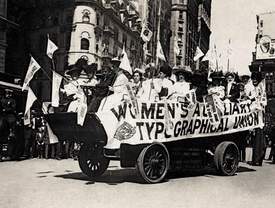
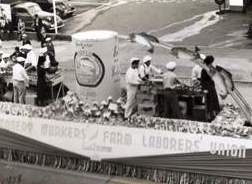 cause for celebration for most laborers. Of course, as we all know, the holiday doesn’t give every worker the day off. That would be almost impossible for all the obvious reasons. Nevertheless, as Labor Day arrives, I hope that each and every worker knows that whether they get the day off or not, this grateful nation has set aside this day to celebrate them, and to thank them for making this nation great. Happy Labor Day to workers everywhere!!
cause for celebration for most laborers. Of course, as we all know, the holiday doesn’t give every worker the day off. That would be almost impossible for all the obvious reasons. Nevertheless, as Labor Day arrives, I hope that each and every worker knows that whether they get the day off or not, this grateful nation has set aside this day to celebrate them, and to thank them for making this nation great. Happy Labor Day to workers everywhere!!
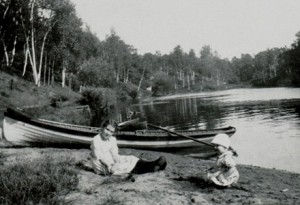 My Uncle Bill Spencer spent most of his life collecting information about the family history, in an effort, not only to know about his past and his heritage, but to pass it along to the rest of his family. His search began when he was eight and his mother told him about a black book that held the known family history at that time. For some people the information in the black book might have been enough information, but for Uncle Bill, it was just enough to whet his appetite for more. That was when the journey started. It was a journey that would continue for most of his life…until dementia would cause Uncle Bill to forget…or at least to forget that he was still searching.
My Uncle Bill Spencer spent most of his life collecting information about the family history, in an effort, not only to know about his past and his heritage, but to pass it along to the rest of his family. His search began when he was eight and his mother told him about a black book that held the known family history at that time. For some people the information in the black book might have been enough information, but for Uncle Bill, it was just enough to whet his appetite for more. That was when the journey started. It was a journey that would continue for most of his life…until dementia would cause Uncle Bill to forget…or at least to forget that he was still searching.
As I was looking at a picture in Uncle Bill’s family history books that I had seen many times before, and reading what he had written about it, just as I had before, one sentence caught my eye. The picture was of his older sister, my Aunt Laura Spencer Fredrick, and Uncle Bill taken in about 1924 at Billings Park at the west end of Superior, Wisconsin. Billings Park was a place that Uncle Bill really loved, and over the years, the park was not 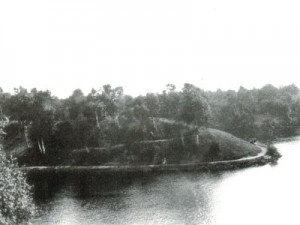 kept up as well as it had been in the early years of his life. In Uncle Bill’s later years, he went to Billings Park on occasion. He speaks of trying to remember the park in the years when it was kept up better. He would think about the good times they had there, the happy memories, and the friends he knew then…so many now gone. All of the memories he talked about sounded so sweet, but it was his last sentence that really caught my eye, and even made me a bit sad. He said, “I can’t forget.”
kept up as well as it had been in the early years of his life. In Uncle Bill’s later years, he went to Billings Park on occasion. He speaks of trying to remember the park in the years when it was kept up better. He would think about the good times they had there, the happy memories, and the friends he knew then…so many now gone. All of the memories he talked about sounded so sweet, but it was his last sentence that really caught my eye, and even made me a bit sad. He said, “I can’t forget.”
At the time Uncle Bill placed the Billings Park pictures and wrote the narrative, he says the year was 2003. When my sisters and I visited him in October of 2005, his memory was slipping a bit. It wasn’t to the serious level that it is now, but having dealt with Alzheimer’s Disease with my mother-in-law, I know without doubt that he was at the point of wondering what was wrong with him…why he couldn’t remember the things that had been so important to him all his life. That simple statement, “I can’t forget” could mean that the memories flooded his mind, or it could have meant that he went there in an effort to hold on to the memories that seemed to be slipping away so quickly.
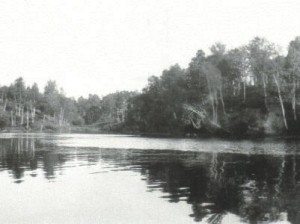 It saddens me to know that my Uncle Bill, who has spent his whole life researching, studying, and learning more and more about his heritage, and finding pictures, taking pictures, and placing pictures in his history books, is now struggling to hold on to the memories that his life and all his research has given him. I wish there was a way that we could help him to hold onto those memories. It also saddens me to know that he feels sadness when he remembers the friends and family members who have passed away. I think that probably the hardest part of a long life is the loss of so many people that you care about. It would be hard to be the last one left to pass along the memories, lest we…the future forget about the past.
It saddens me to know that my Uncle Bill, who has spent his whole life researching, studying, and learning more and more about his heritage, and finding pictures, taking pictures, and placing pictures in his history books, is now struggling to hold on to the memories that his life and all his research has given him. I wish there was a way that we could help him to hold onto those memories. It also saddens me to know that he feels sadness when he remembers the friends and family members who have passed away. I think that probably the hardest part of a long life is the loss of so many people that you care about. It would be hard to be the last one left to pass along the memories, lest we…the future forget about the past.
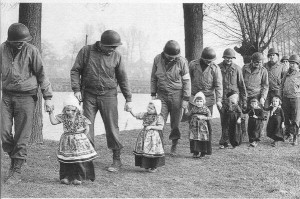
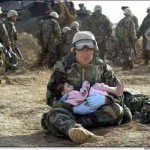 When we think of soldiers, most of us picture the fighting machines that these men have been trained to be, and we would not be wrong in most respects, but what we sometimes fail to realize is the fact that a soldier is a person with a deep love of human life. They don’t go to war because they want to be trained killers, but rather they go to war because they want to preserve life, and a way of life. They see that there are people in this world who are being abused, beaten, and starved into submission…or worse yet killed for refusing to submit. There are evil people in this world, who somehow feel that they have the right to control other human lives. They want servants, or they want to sell people, or just own people. Soldiers go to war, because they see these evil actions for the wrong that they are, and they can’t stand by and let it just happen.
When we think of soldiers, most of us picture the fighting machines that these men have been trained to be, and we would not be wrong in most respects, but what we sometimes fail to realize is the fact that a soldier is a person with a deep love of human life. They don’t go to war because they want to be trained killers, but rather they go to war because they want to preserve life, and a way of life. They see that there are people in this world who are being abused, beaten, and starved into submission…or worse yet killed for refusing to submit. There are evil people in this world, who somehow feel that they have the right to control other human lives. They want servants, or they want to sell people, or just own people. Soldiers go to war, because they see these evil actions for the wrong that they are, and they can’t stand by and let it just happen.
So yes, in that respect, our picture of the trained killer is exactly right, but what we so often miss is the human side of the soldier. We miss the man or woman who has left their own children, nieces, or nephews behind to go and fight for children in some other country, so that they might be able to live out their lives in the same safety that the children, nieces, and nephews of the soldier are able to live in back home. The problem is that we don’t often realize what things they do for those children in other nations. We don’t often see the moments of playing with the children. We don’t see the children who come up to the soldiers, because they feel safe around them…even with the possibility of gunfire at any moment. They still feel safer near the soldiers than they do on their own.
And for our soldiers, who are so lonely for their own children, nieces and nephews, it is a nice break from the reality of war, with all its ugliness, even if it is just once in a while, and even if it is just for a few moments. Maybe they can take a few moments and pretend that this child they are playing with is their own child at home. Maybe they can pretend that they are pushing their own child in a swing, on a merry-go-round, or just giving them a simple hug. Perhaps those few moments that they get once in a while, can take them away from 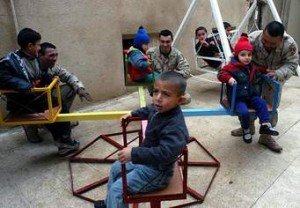
 the worry for their own safety, or the fact that in a little while they will be faced with an enemy, who they will have to kill, or they will be killed. War is a hard place to be, and a life event that no soldier can ever forget, so it is nice, for just a few moments, to be able to spend a little time with a child, to get away from the war and the ugliness that lies within it. Sometimes we, the people back home need to just consider the sacrifice our soldiers make, and be glad that they have a moment of relief, even if it is just once in a while.
the worry for their own safety, or the fact that in a little while they will be faced with an enemy, who they will have to kill, or they will be killed. War is a hard place to be, and a life event that no soldier can ever forget, so it is nice, for just a few moments, to be able to spend a little time with a child, to get away from the war and the ugliness that lies within it. Sometimes we, the people back home need to just consider the sacrifice our soldiers make, and be glad that they have a moment of relief, even if it is just once in a while.
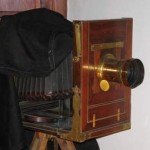 Over the centuries, we have seen many changes in how people preserved their images in picture. From the days of hieroglyphics to the days of digital photography, much has changed in the world of what we now call photography. In fact, many people these day never print a photograph at all, they simply view it, share it, and save it online. Such was not always the case. It use to be that to have a picture taken was an expensive venture, and one that was not done often. Then as photography became more and more common, pictures became a common thing. These days with digital cameras, taking pictures is commonplace, and people even take selfies because they can, and it’s something new and fun.
Over the centuries, we have seen many changes in how people preserved their images in picture. From the days of hieroglyphics to the days of digital photography, much has changed in the world of what we now call photography. In fact, many people these day never print a photograph at all, they simply view it, share it, and save it online. Such was not always the case. It use to be that to have a picture taken was an expensive venture, and one that was not done often. Then as photography became more and more common, pictures became a common thing. These days with digital cameras, taking pictures is commonplace, and people even take selfies because they can, and it’s something new and fun.
The original cameras were big, bulky, and expensive. One avid photographer, George Eastman wanted to bring the world of photography to the masses. George worked on his project until he perfected a Kodak camera that 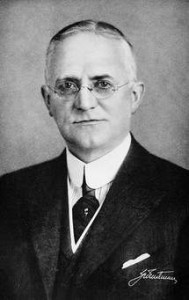 used a roll of dry, transparent, and flexible, photographic film, which he had also invented. That was on September 4, 1888, and both cameras and film…or the lack thereof, have come a long way since then. Still, it is men like George Eastman who had a dream to bring photography into the hands of the masses, who paved the way for the amazing abilities we have today. To me, pictures are gold…pure gold. They tell of at time we couldn’t have known about. All we have is the stories that history has told, and the pictures to show us what it was like.
used a roll of dry, transparent, and flexible, photographic film, which he had also invented. That was on September 4, 1888, and both cameras and film…or the lack thereof, have come a long way since then. Still, it is men like George Eastman who had a dream to bring photography into the hands of the masses, who paved the way for the amazing abilities we have today. To me, pictures are gold…pure gold. They tell of at time we couldn’t have known about. All we have is the stories that history has told, and the pictures to show us what it was like.
In 1883, Eastman announced the invention of photographic film in rolls, but he had no way to use it then. Kodak the company was born in 1888 when the first Kodak camera entered the market. The camera came the Kodak camera could easily be carried and handheld during its operation. The camera came pre-loaded with enough film to take 100 pictures. “You press the button, we do the rest” promised George Eastman in 1888 with this advertising slogan for his Kodak camera. George Eastman wanted to simplify photography and make it available to everyone, not just trained photographers. He had a dream. He knew that there was no reason that everyone could not be a photographer. All that was needed was the right equipment. After the shots in the new camera were taken, the whole camera was returned to the Kodak company in Rochester, New York. There, the film was developed, prints were made, and new film was  inserted. Then the camera and prints were returned to the customer, so they could take more pictures.
inserted. Then the camera and prints were returned to the customer, so they could take more pictures.
I have to think that this was considered such an amazing invention. I can picture just how excited everyone was. It must have felt like we felt when men walked on the moon for the first time. Like something out of this world. Or maybe that is just the way I would have felt if I were the me of today, seeing the amazing new technology of that day. I think George Eastman must have been an amazing man of incredible vision. So many memories have been preserved because of him. George Eastman was one of the first American industrialists to employ a full-time research scientist. He wanted the best people to do the job. Later, Eastman and his associate would perfected the first commercial transparent roll film which made possible Thomas Edison’s motion picture camera in 1891. It’s funny that something that changed so many things in our world, is now almost obsolete. Digital cameras have replaced all that, and now we are able to save our memories in a whole new way. It was George Eastman who paved the way.
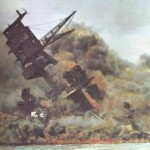
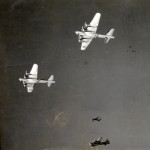 World War II had been raging since September 1, 1939. It was without doubt the most destructive war in history. Some say it was simply a continuation of World War I, that had ended in 1918. Others will blame the 1931 Japanese seizure of Manchuria from China, or Italy’s invasion and defeat of Ethiopia in 1935, or Adolf Hitler’s re-militarization of Germany in 1936, or the Spanish Civil War 1936 to 1939, or Germany’s occupation of Czechoslovakia in 1938 as possible beginnings. But, the two dates most often mentioned as “the beginning of World War II” are July 7, 1937, when the “Marco Polo Bridge Incident” led to war between Japan and China, and September 1, 1939, when Germany invaded Poland, which led Britain and France to declare war on Hitler’s Nazi state in retaliation. To me it would seem that the tensions that had begun before World War I, simply never went away. It would seem that there were many world leaders who were power hungry, and greedy for the lands that belonged to their neighbors. And when you look at the Middle East today, maybe not much has really changed.
World War II had been raging since September 1, 1939. It was without doubt the most destructive war in history. Some say it was simply a continuation of World War I, that had ended in 1918. Others will blame the 1931 Japanese seizure of Manchuria from China, or Italy’s invasion and defeat of Ethiopia in 1935, or Adolf Hitler’s re-militarization of Germany in 1936, or the Spanish Civil War 1936 to 1939, or Germany’s occupation of Czechoslovakia in 1938 as possible beginnings. But, the two dates most often mentioned as “the beginning of World War II” are July 7, 1937, when the “Marco Polo Bridge Incident” led to war between Japan and China, and September 1, 1939, when Germany invaded Poland, which led Britain and France to declare war on Hitler’s Nazi state in retaliation. To me it would seem that the tensions that had begun before World War I, simply never went away. It would seem that there were many world leaders who were power hungry, and greedy for the lands that belonged to their neighbors. And when you look at the Middle East today, maybe not much has really changed.
Wherever you place the beginning of World War II, you would agree that while the Japanese and the Germans may not have been war weary, the rest of the world really was. Before the Japanese attacked Pearl Harbor on December 7, 1941, the United States had somehow managed to stay out of the conflict. Whether that was right or wrong is a matter of opinion too. Nevertheless, when the Japanese brought the war to our front door, the United States answered with a vengeance. I’m sure the allies were glad to have the reinforcements, but also wondered why it had taken so long for us to get involved. Sometimes, I have wondered that myself, about that and other wars that we have come into just a little bit late in the game.
That said, we got into the war, and I believe that the extra military might that the United States brought to the Allied Forces was the tipping point in the war, because a war that had officially raged since September 1, 1939, was brought to an end on September 2, 1945, when Victory over Japan was celebrated in the United States. Japanese troops finally surrendered to Americans on the Caroline, Mariana, and Palau islands. Representatives of their emperor and prime minister were preparing to formalize their declaration of defeat. In Tokyo Bay, aboard the Navy battleship USS Missouri, Japanese foreign minister, Mamoru Shigemitsu and chief of staff of the Japanese army, Yoshijiro Umezu, signed the “instrument of surrender.” General Douglas MacArthur, commander of the US Army forces in the Pacific, and Admiral Chester Nimitz, commander of the US Pacific Fleet were there to represent the Allied victors.
After the surrender, Mamoru Shigemitsu was found guilty of war crimes. He was sentenced to seven years in prison. Oddly, it was he who had fought for concessions on the Japanese side in an attempt to secure an early peace. He was paroled in 1950 and went on to become chairman of Japan’s Progressive Party. General 
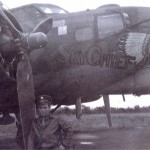 MacArthur would come up against him again when he was named commander in chief of the United Nations forces in Korea in 1950. For some people, it would seem, that one defeat simply isn’t enough, but that is another story. Today is VJ Day…Victory over Japan Day. It may not be a day that we remember as well as we do D Day, which simply stands for the day designated to storm the beaches at Normandy, or the attack on Pearl Harbor, but VJ Day is in reality as important a day as those others too, because it was the day that ended the world’s worst, and most destructive war.
MacArthur would come up against him again when he was named commander in chief of the United Nations forces in Korea in 1950. For some people, it would seem, that one defeat simply isn’t enough, but that is another story. Today is VJ Day…Victory over Japan Day. It may not be a day that we remember as well as we do D Day, which simply stands for the day designated to storm the beaches at Normandy, or the attack on Pearl Harbor, but VJ Day is in reality as important a day as those others too, because it was the day that ended the world’s worst, and most destructive war.

